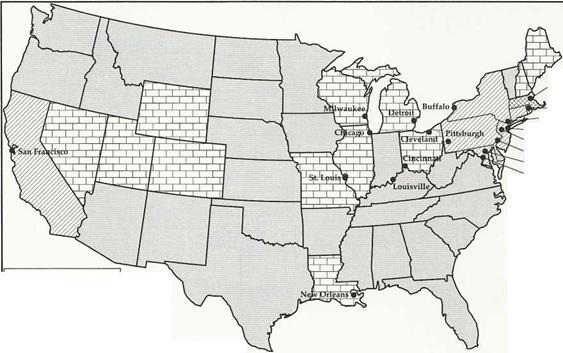The Interstate Commerce Act of 1887
The first legislation in the United States regulating transportation was the Interstate Commerce Act, in 1887. This statute heralded the era of “negative” legislation, or legislation that had the effect of curbing or restricting railroads in their conduct of business.
The thrust of the Act was to prohibit the railroads from paying rebates (kickbacks), from giving unreasonable preferences to shippers, and from discrimination against any shipper. Railroads were required to publish tariffs, which disclosed rates and schedules, and they were required to charge according to those tariffs. The Act brought uniformity to the relationship between the railroads and the public.
The Interstate Commerce Act and its amendments also created the Interstate Commerce Commission, the agency assigned the role of administering the terms and provisions of the statute. It was empowered to monitor railroads to ensure compliance with the terms of the statute, to hear complaints from the affected public, and to make rules and enter orders in furtherance of the statutory mandate.
Subsequent federal enactments continued the era of negative legislation toward the transportation industry, including:
• The Elkins Act of 1903 (focused on person discrimination and established a system of fines and criminal penalties)
• The Hepburn Act of 1906 (set maximum rates)
• The Mann-Elkins Act of 1910 (focused on place discrimination)
![]()
|
|
|
|
|
|
|
|
|
|
|


 The pendulum had swung too far in the early and energetic days of railroading, and the government was now catching up to balance things out in the public interest. The days of unbridled capitalism in the railroad business were over. In the early years of the 20th century, the railroads were nearing what was to be their maximum trackage (miles of laid tracks), and they were just about to experience the effects of continuing industrial and technological development (Figure 3-4 displays the emergence of U. S. cities in 1880) that would lead to alternative forms of transportation that would overpower them. The days of the internal combustion engine, the open road, and the machines of the air lay just over the horizon.
The pendulum had swung too far in the early and energetic days of railroading, and the government was now catching up to balance things out in the public interest. The days of unbridled capitalism in the railroad business were over. In the early years of the 20th century, the railroads were nearing what was to be their maximum trackage (miles of laid tracks), and they were just about to experience the effects of continuing industrial and technological development (Figure 3-4 displays the emergence of U. S. cities in 1880) that would lead to alternative forms of transportation that would overpower them. The days of the internal combustion engine, the open road, and the machines of the air lay just over the horizon.











